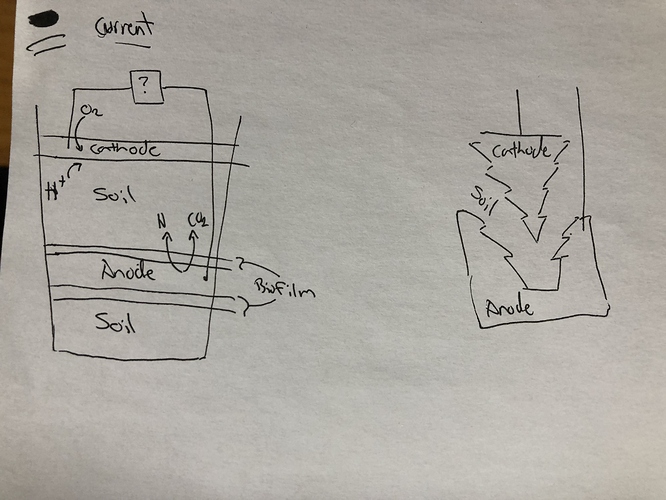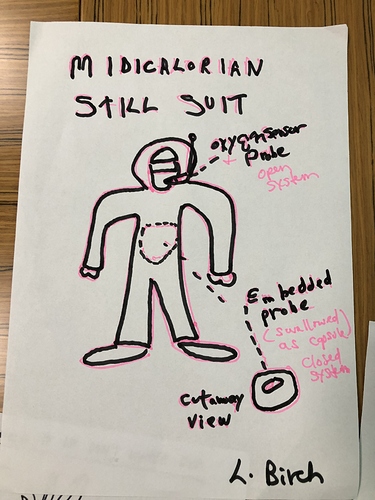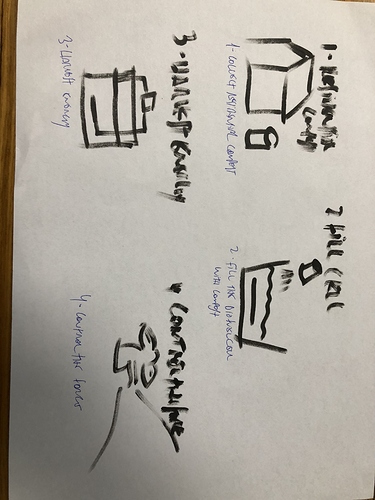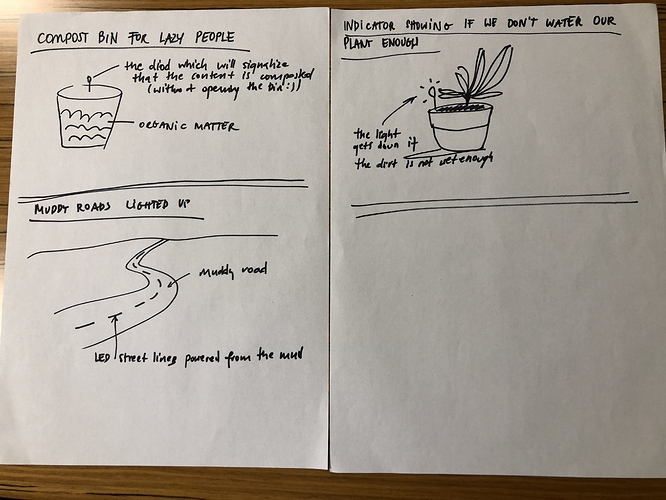Summary
The idea is to draw attention to microbial fuel cells (MFC) since it’s a rather neglected topic in recent years. After Saad explained the general concept and its striking similarities to The Force in Star Wars, we did a brain storming session on how to explore electric power from bacteria better and more efficiently. The session finished with everyone making sketches of a new MFC design/layout.
Notes
Midi-chlorians & Mud
aka. “The Force IRL”
Link to slides from Saad:
Conveners: Alex & Saad
Taking notes: Oliver
Attendance: Alex, Saad, Take, Hamish, Leslie plus at least 2 more (please add your names)
Short Summary:
The idea is to draw attention to microbial fuel cells (MFC) since it’s a rather neglected topic in recent years. After Saad explained the general concept and its striking similarities to The Force in Star Wars, we did a brain storming session on how to explore electric power from bacteria better and more efficiently. The session finished with everyone making sketches of a new MFC design/layout.
Midi-chlorians, defined in wookipedia. They mediate The Force.
Bacterias to human cell ratio estimated as 10:1
according to Dwayne Savage 1977
later corrected closer to 1:1, but still - WTF!
Are we empowered by bacteria?
Some bacteria species are capable of generating electric potential (Bioelectrogenesis, → get electronegatively charged) The two most well known examples are Geobacter & Shewanellla which are anaerobic (need to live without oxygen) soil bacteria.
There were already some projects out there which make use of the bacterias abilities to produce electric power. The principle is always the same: harvesting of the produced charges → anode = anaerobic soil | aerobic water = cathode
Here are some examples:
-
Nomad Plants - Gilberto Esparza (unfortunately not actually powered fully by MFC)
-
Charcoal bags in mud water (as both anode and cathode)
-
‘mudWatt’ can be bought as a toy like kit
We took mudWatt as an example collect ideas on how to optimize the setup to generate enough power for e.g. a sensor.
mudWatt facts:
- 0.5Volt max.
- Saad reported 3-6uA, 180 mV, from his first tests, which is at least some micro Watts.
- Other figures suggest rather nano watts, which would be not useful.
- required conditions for MFC to work: no oxygen, opposing electrodes
We were discussing how does a joule thief work (potential use in the setup): energy is conserved, what matters is the overall power output in Watts (W = V * A)
Use cases of improved MFCs: e.g. standby power supply
→ charging a capacitor
Ideas to improve: increase the surface of the electrodes, porous ones?
pictures from the ideation sessions





